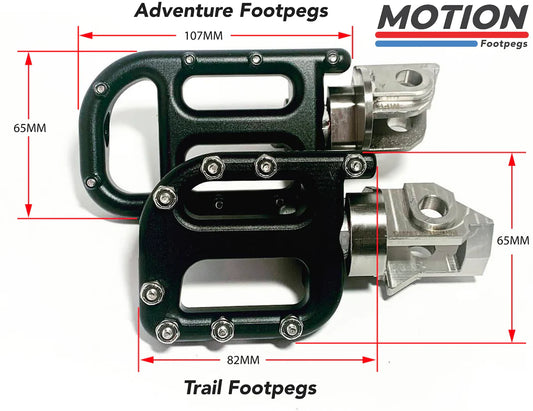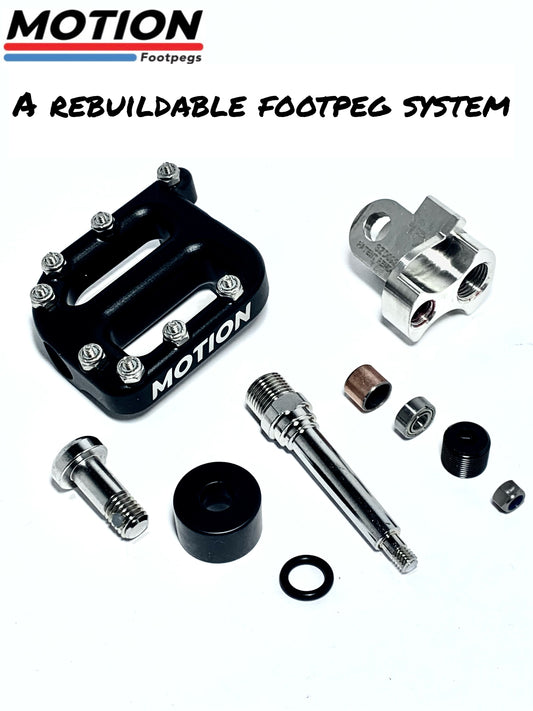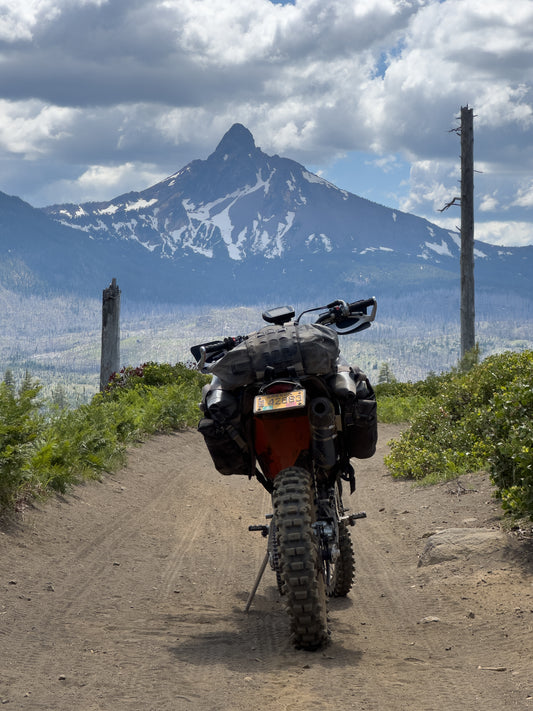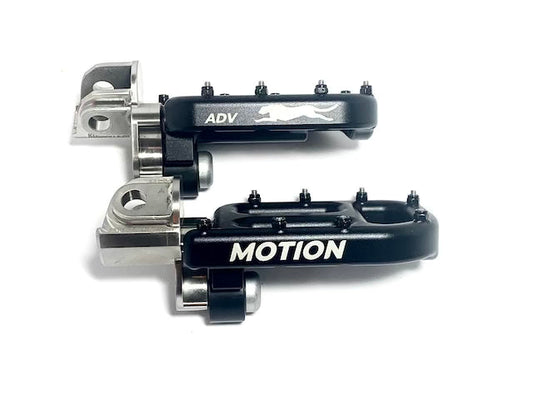Blog

Motion Footpegs Video Reviews
We are making a page for video reviews. When we see our products mentioned in videos, we will do our best to collect them here. -YouTube Channels: -Camp2Ride: Enduro Model...
Motion Footpegs Video Reviews
We are making a page for video reviews. When we see our products mentioned in videos, we will do our best to collect them here. -YouTube Channels: -Camp2Ride: Enduro Model...
Enduro Footpegs
When we first started designing a new footpeg for the aftermarket, we wanted to solve multiple issues with the current footpeg design. We wanted to design a system that...
Enduro Footpegs
When we first started designing a new footpeg for the aftermarket, we wanted to solve multiple issues with the current footpeg design. We wanted to design a system that...

What size Platform should I get from Motion Foo...
If you would rather watch a video click this link. When deciding between the Trail or Adventure size platform from Motion Footpegs, it's important to consider your specific riding needs...
What size Platform should I get from Motion Foo...
If you would rather watch a video click this link. When deciding between the Trail or Adventure size platform from Motion Footpegs, it's important to consider your specific riding needs...

How often should I replace my bushings?
Think or bushing like changing your oil or getting new tires. The more you stay on top of it the better your bike will preform. Regularly changing bushings will greatly...
How often should I replace my bushings?
Think or bushing like changing your oil or getting new tires. The more you stay on top of it the better your bike will preform. Regularly changing bushings will greatly...

What you should consider when choosing Adventur...
The Best Adventure footpegs in the Galaxy, we guarantee it.
What you should consider when choosing Adventur...
The Best Adventure footpegs in the Galaxy, we guarantee it.

Introducing Flex-Mount Footpegs: The Ultimate U...
What are Flex-Mount Footpegs and Why Do You Need Them? Are you an off-road enthusiast looking to take your riding experience to the next level? Look no further than Flex-Mount...
Introducing Flex-Mount Footpegs: The Ultimate U...
What are Flex-Mount Footpegs and Why Do You Need Them? Are you an off-road enthusiast looking to take your riding experience to the next level? Look no further than Flex-Mount...
How we view Footpegs
We felt like the market was missing a footpeg option and this is what we came up with. Over a period of 2 years, we developed a system that we feel is a great option for those riders that want something a little different than what the current market has to offer.
Here is how the designing of the system worked with our process. To design a good platform you have to start with the boot. So, pretty much all modern MX-style boots have a heel in them. We kinda feel like the heel in boots is unnecessary for standing bike applications (dirt bikes) and boots would have better grip and comfort with no heel and a flat wedge design. This would ensure all standing foot positions are comfortable and have maximum grip. The heel serves a limited purpose while standing other than keeping up with the tradition of all boots having a heel in them.
So with that being said, 99% of all boots sold have a heel in them and we can't change that so we designed different-sized platforms instead. We find that the heel can sometimes get in the way when sliding forward with small boot sizing, Mainly on the brake side. We also think it's fine to mix and match platform sizes since your right foot performs a different control task than your left foot.
It is personal comfort and if someone rides with a trials style wedge sole then there are no real restrictions on platform size. Most of the time simply adjusting your brake and shift lever heights can solve any comfort issues but we also know that a lot of riders never touch these controls which is a shame.
What's up with the rotation? Why would you want a footpeg that rotates?
Just like the suspension on your bike it allows the bike to move independently from the Tires for maximum grip and feel. Most of the time the rider is trying to counter what the bike is doing. If the bike moves up and back the rider will need to move forward and down to counter this motion and vice versa.
The rotation in the footpeg moves with your body's motion and not your bike's. This makes it easier and more efficient to counter your bike's movements and stay balanced and online.
What's up with the different sizes and why would you make them out of plastic?
The small platform should not require any real adjustment of the controls (closer to stock size) but as you move up in size we recommend adjusting your controls.
We view platforms more like the sole of a boot. They are durable and tough but should be dynamic and have some flex and forgiveness. Eventually, they wear out and you put new ones on. The comfort, grip, and anti-vibration, and low friction benefits outweigh the fact that they are a wear item. Platforms fall into the category of tires, handgrips, boots, gloves, brake pads, and so on. You could make all these items out of steel so they would last forever but the benefits would not outweigh the ones that cause them to wear out have to offer.
"You wouldn't want a metal boot sole just because they would last forever because that benefit would not outweigh the ones of a rubber sole."
We understand that this is a total shift in what the market currently offers. That being said, we are in no way anti-fixed or metal platforms. We just want to give the consumer another option.
In the Spring of 2023 we will release our metal and rigidly mounted platforms. Our mounts will be able to do it all.
We put an a80 and a90 bushing on all new mount setups so people can get a good feel of both. The bushings are high quality yet inexpensive (we achieve this because we use skateboard bushings that are already developed and produced in massive quantities around the world) and a wear item designed to be replaced each season or depending on how hard or often someone rides.
Bushings help accomplish 2 things. 1- they absorb shock and vibration, taking pressure off of your ankles and legs. 2- they provide feedback and resistance as you operate your controls. They make the whole system work and provide a responsive and controlled movement.
